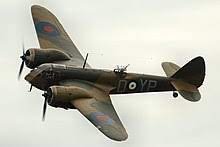Chapter IV - Middle East Operations – 1920–1941
The fighting spirit of 30 was not forgotten, for on the 1st February 1920 the Squadron was restored to full establishment at Baghdad now equipped with DH9As. The Squadron was soon in action against Bolsheviks in northwest Persia in 1921, and against their old enemy the Turks in 1922. They expended much effort against the notorious Sheik Mahmud who was such a persistent thorn in the flesh of 30 Sqn that he earned the nickname ‘Director of the RAF Training Middle East’.
During the British occupation of Iraq following the First World War, Sheikh Mahmud was appointed governor of Sulaymaniyah. The Kurds, however, were afraid of Britain ruling them indirectly by Arabs in Baghdad, and Sheikh Mahmud used his position to promote Kurdish independence and rebelled against the British in 1920.
Peace and Preparation
In the years between the wars, 30 Sqn continued to have an active presence in Iraq maintaining peace amongst the tribes. They exchanged their ‘Nine-ack’ (DH9A) for the Wapiti in 1929, and those for Hardys in 1935. In January 1938 command of the Sqn was taken by Sqn Ldr GH Stainforth, AFC, previously a member of the Special High Speed Flight who in 1931 established a world speed record of 407.5mph in the Supermarine S6B. But ahead the clouds were darkening, and it was becoming clear that war was just a matter of time.
As the international situation deteriorated, the Sqn was selected to be the first overseas unit to equip with the Bristol Blenheim. As the pace towards war quickened, the Sqn moved back to Egypt, to its very first base Ismailia. When the British Ultimatum expired on 3rd September 1939, 30 Sqn was at its war station; the same enemy and the same place.
Egypt and Greece
Employed in the role of ‘fighters’, 30 Sqn participated in numerous exercises, and it was not until June 1940, when the ‘real thing’ spread to North Africa, that the Sqn moved into the desert to fight again over the sandy wastes.
The Bristol Blenheim
Soon, Greece, drawn into the War by Italy, required assistance and 30 Sqn were the first to go. Arriving in Greece on 6th November 1940 the Sqn mounted air defence patrols around Athens, in addition to bombing raids against enemy held docks and enemy supply lines. By April the situation was such that a withdrawal to Crete became necessary where aircover was provided for the convoys involved in the evacuation. When the end came in Crete, the Sqn withdrew back to Egypt leaving a rear guard to fight it out on the ground with rifle and bayonet alongside the army.
To read more on the Battle of Crete follow this link: Battle of Crete

